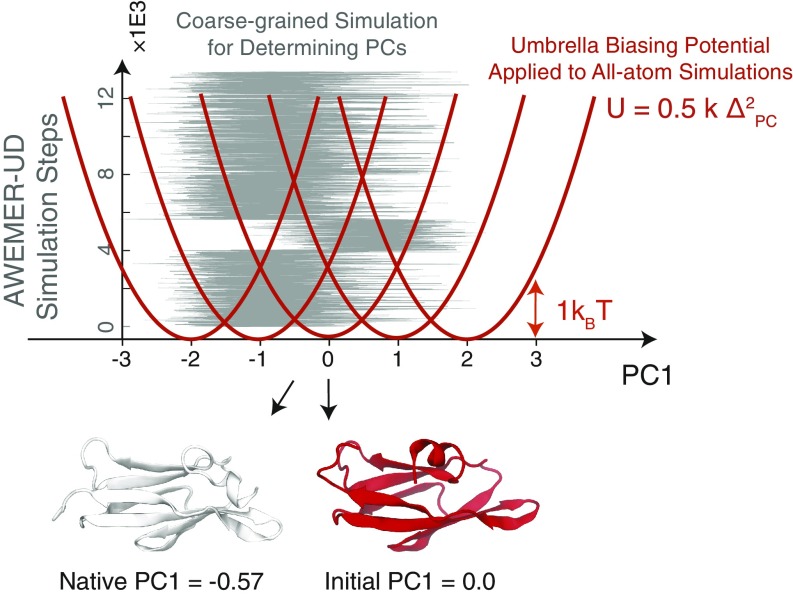Fig. 1.
Summary of the PC-guided refinement protocol used in this study. The refinement protocol includes a coarse-grained modeling step for determining the mechanical deformations to be made in an all-atom refinement step where the molecule is distorted mechanically. The coarse-grained AWSEM with evolutionary restraints from ultradeep learning (AWSEMER-UD) potential (11) was simulated at a constant temperature of 300 K starting from the initial model structure taken from the CASP12 repository. The coarse-grained trajectory is then used to find the principal components of the backbone motions. A single principal component was then chosen from among those with the largest eigenvalues according to the effect of its motion on the change in the number of contacts (see Materials and Methods for details). These motions would require cracking. The variations of the selected principal component’s value during the constant temperature trajectory are shown in gray. In the five subsequent all-atom explicit-solvent refinement simulations, an umbrella potential was applied to sample along the selected principal component. The reference points of the harmonic biasing potentials were chosen to range from −2 to 2 in units of the SD of principal component values sampled during the coarse-grained AWSEMER-UD simulation. Bottom shows the native and the initial structures with their corresponding principal component values.

